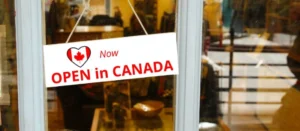Are you a Canadian who wants to open a bank account in the US? Whether you visit the US often, own property there, or do business across the border—with $627 billion in Canadian investment flowing to the US in 2023—a US bank account makes life easier and saves you money.
This guide shows you how to open a US bank account from Canada in 2025, with clear steps and practical tips. While our focus is on Canadians, much of this advice applies to opening a bank account in the US as a foreigner from any country. You’ll also see how SAL Accounting can help. Let’s get started!
Quick Takeaways
- Documents needed: Valid Canadian passport, second photo ID, proof of Canadian address, and often a US mailing address
- Best banks for Canadians: TD Bank, RBC Bank USA, and BMO Harris
- Easiest online option: Wise Multi-Currency Account (no monthly fees, 100% online)
- No US visit required: Many banks now offer remote account opening for Canadians
- Tax considerations: Report interest on Canadian taxes; file FBAR if US accounts exceed $10,000
Why Do Canadians Need US Bank Accounts?
Before we get into the “how,” here’s why having a US bank account makes sense: You won’t pay the 2.5% fees on US purchases, which saves you money right away. Owning property in the US gets easier too—just pay your mortgage, taxes, and bills without any trouble. Plus, you can get paid in US dollars straight from clients, no waiting around.
It’s also a simple way to start building US credit for later. Traveling feels smoother since you can grab your money easily while in the US.
Fun fact: According to NAR, more than 1 in 4 foreign property owners in Florida are Canadian, and having a local bank account makes managing these investments much easier.
Step-by-Step Process: How to Open a US Bank Account
Here’s how to open a US bank account as a Canadian:
Step 1: Figure Out What You Need
First, think about what you need your US account for: Will you mainly use it for travel, property, or business? How often will you need to get to your money in the US? Do you want it to connect with your Canadian accounts? Your answers will help you pick the right bank and account type. For tailored advice on your specific situation, our us-canada cross border tax accountants can help.
Step 2: Requirements for Opening a US Bank Account
As a non-resident opening a US bank account, you’ll need these papers:
| Document | Required by | Notes |
| Canadian passport | 100% of banks | Must be valid |
| Second photo ID | 87% of banks | Canadian driver’s license works great |
| Proof of Canadian address | 96% of banks | Recent utility bill or bank statement |
| US mailing address | 74% of banks | Can use a friend’s address or mail service |
| Money for first deposit | 93% of banks | Usually $25-$500 depending on the account |
| SSN or ITIN | 58% of banks | Many banks don’t ask Canadians for this |
🌟 Pro Tip: Call the bank before you visit to check exactly what they need. Each bank has its own rules, and these can change—some might even ask for a quick face scan with 2025’s new tech rules.
Step 3: Pick the Right Bank
Some US banks are friendlier to Canadians than others.Our corporate tax experts recommend considering these options based on your specific needs:
- TD Bank: Perfect if you already use TD Canada Trust
- RBC Bank USA: Made specially for Canadians with US banking needs
- BMO Harris: Great choice if you’re a Bank of Montreal customer
- Chase: Huge network if you need access all over the US
- Bank of America: Popular with Canadians buying property in southern states
Example: Sarah from Toronto visits Florida every winter. She picked TD Bank because she already has a TD Canada Trust account. She can see both accounts in one app and move money between them right away.
➜ Read more: “Taxes for US Citizens Working Remotely for Canadian Companies”
Step 4: Visit a Branch (If You Can)
For the easiest experience:
- Call ahead to make an appointment
- Bring all your documents
- Take your first deposit with you
- Fill out the forms with a bank employee
- Set up online banking while you’re there
- Ask for a debit card and checks if you need them
The whole process usually takes 1-2 hours, and your account will be ready to use within 1-3 days.
How to Open a US Bank Account Online as a Non-Resident
Can’t make it to the US? You’ve still got options to open an account online—37% of banks now let you do it remotely in 2025.
Digital Banking Options
Here’s a quick look at a top choice for going digital:
Wise Multi-Currency Account
The Wise Multi-Currency Account lets you sign up 100% online in about 20 minutes and provides real US bank details, like routing and account numbers. It has no monthly fees (just small conversion costs) and includes a debit card for US ATMs and shopping, with the whole process taking around 20 minutes. Banks use extra security like two-step logins now, so it’s safe too.
Mercury (For Businesses)
Mercury is made for international businesses. It offers full US banking features with checkbooks, no monthly fees or minimum balances, and a simple online application with document upload. Approval time is usually 7-10 days.
Pro Tip: When applying online, make sure your documents are clear and exactly match what’s asked for. Most rejections happen because of blurry or wrong documents.
Using Canadian Banks with US Branches
If you already bank with these Canadian banks, you’ve got a big advantage with cross-border banking solutions for Canadians:
- TD Canada Trust → TD Bank: Start your application at your Canadian branch
- RBC → RBC Bank USA: Cross-border packages available
- BMO → BMO Harris: Connected cross-border banking
- CIBC → CIBC US: Special cross-border services
These cross-border relationships usually offer a simpler application process and better approval chances, with a 78% success rate compared to 42% for other methods. They also make money transfers between your Canadian and US accounts easier. Plus, you get one online view for all your accounts, keeping everything in one spot.
Case Study: Remote Business Owner Streamlines Cross-Border Payments
The Problem: Jennifer from Vancouver reached out about her marketing business. “I have three big US clients, but I’m losing about 4% on every payment with my setup,” she said. “Last month I lost over $900 in fees on $25,000 of income.”
What We Did: We suggested a Wise Multi-Currency Account instead of a regular bank. We filled out the application together and uploaded her ID and a bill for proof of address. “It was so quick—nothing like dealing with normal banks,” she told us.
The Result: In just 2 days, Jennifer had her US account details and could bill clients right away. “The first payment came through next day with no fees,” she said. She’s now saving about $850 every month. Her US client list has grown by 40% and she keeps money in USD for expenses without having to convert it back and forth.
➜ Read more: “How to Register a Business in the US from Canada: Full Guide“
Types of US Bank Accounts for Canadians
Here are the different types of accounts to choose from:
Checking Accounts
Checking accounts are the most common and useful option for Canadians. They’re perfect for everyday transactions and paying bills, and they come with a debit card for shopping and ATMs—though wire transfers can cost $30-50. The monthly fee is $8-15, often waived if you keep enough money in it.
They’re best for people who travel to the US often or own property there.
Savings Accounts
Savings accounts are great for keeping money and earning some interest. They earn 0.5-4.25% APY on your balance as of March 2025, though US rules limit you to 6 withdrawals per month. The monthly fee is $5-10, often waived.
They’re best for keeping US dollars for future use or investment.
Business Accounts
Business accounts suit Canadians doing business in the US. They keep your business and personal money separate and might need a US business entity like an LLC or Corporation, plus an EIN (Employer Identification Number). The monthly fee ranges from $15-50. If you’re considering establishing a business in the US, our US business incorporation specialists can guide you.
They’re best for Canadian businesses with US customers or operations.
Example: A Montreal tech company opened a Mercury business account to accept payments from US clients. The process took 18 days but saved them the 3.5% fees they were paying on cross-border transactions.
Best US Banks for Canadians in 2025
We’ll cover this topic more in a future article, but here’s a quick look at your top options:
| Bank | Best For | Canadian Connection | Remote Opening | Monthly Fee | Minimum Balance |
| TD Bank | Frequent travelers | TD Canada Trust | Yes | $15 | $100 |
| BMO Harris | Business accounts | Bank of Montreal | Yes | $15 | $1,500 |
| RBC Bank | Property investors | Royal Bank | Yes | $16.95 | $2,500 |
| Chase | Nationwide access | None | No | $12 | $1,500 |
| Charles Schwab | Travelers/Investors | None | Yes | $0 | $0 |
| Wise | Digital banking | None | Yes | $0 | $0 |
🌟 Pro Tip: If you already bank with TD, BMO, RBC, or CIBC in Canada, start there. Having a relationship with these banks often means better treatment and simpler processes.
Tax Implications of a US Bank Account for Canadians
Having a US bank account means dealing with some tax issues:
Canadian Tax Obligations
Let’s start with what Canada expects from you when you have a US account.
Report All Income
Any interest you earn in your US account must be reported on your Canadian tax return. For example, $200 USD interest earned equals about CAD 270 to report—watch for exchange rate gains too.
T1135 Foreign Income Verification
The T1135 form is needed if your total foreign assets go over CAD 100,000. It’s due with your tax return. Penalties can hit up to 5% of the asset value if you don’t file.
US Tax Considerations
Now, here’s what the US side wants you to know.
W-8BEN Form
The W-8BEN form shows you’re not a US person. It cuts withholding tax on interest from 30% to 10%. File it when opening your account and every 3 years after.
Foreign Bank Account Report (FBAR)
You need this if your US accounts total more than $10,000 at any point. Banks also report deposits over $10,000 separately. It’s filed with the US Treasury’s Financial Crimes Enforcement Network. The deadline is April 15, with an automatic extension to October 15.
🌟 Pro Tip: The Canada-US Tax Treaty was updated in January 2025, changing some reporting requirements. For bigger accounts, it might be worth talking to a cross-border tax expert.
Case Study: Snowbird Couple Avoids Cross-Border Tax Headaches
The Problem: Robert and Maria from Toronto called after buying a winter home in Arizona. “We were paying over $3,200 a year just in foreign transaction fees,” Robert said. “We sent $95,000 USD for home updates, and our accountant mentioned FBAR forms we’d never heard of,” added Maria.
What We Did: We explained what tax forms they needed to file. Their US account was over the $10,000 limit for FBAR filing, and their assets were above the CAD $100,000 mark for the T1135 form. We showed them how to report interest income and connected them with our tax expert. We also filled out forms to cut their tax rate from 30% to 10%.
The Result: By fixing their tax situation, they avoided fines that could have topped $10,000. We suggested RBC Bank USA for better cross-border banking. “Just having peace of mind was worth it,” Robert told us. “We’re saving about $4,700 a year on fees and taxes.” They now easily manage their money and have told five other Canadian snowbird couples about our help.
➜ Read more: “Factual vs. Deemed Residency for Taxes in Canada: Key Differences“
Common Challenges and How to Solve Them
Even with good preparation, you might hit some bumps in the road. Here’s how to get past them:
1. US Address Requirement
The issue: 74% of US banks need a US physical address.
Solutions:
- Use a friend or family member’s US address (ask them first!)
- Use a property you own in the US
- Sign up for a mail forwarding service ($10-25/month)
- Pick banks with Canadian-specific programs that don’t require this
2. SSN or ITIN Requirement
The issue: Some banks ask for a US tax ID number.
Solutions:
- Choose banks that don’t require this for Canadians (TD, RBC, and 42% of others)
- Apply for an ITIN using Form W-7 (takes 7-11 weeks)
- Provide other verification through your Canadian bank relationship
3. No US Credit History
The issue: Some banks check US credit history.
Solutions:
- Bring Canadian credit reports with an official translation
- Get a letter from your Canadian bank
- Start with a basic account and build history over time
Example: When Michael from Vancouver needed a US account for his Florida vacation home, Chase first said no because he had no US credit history. He brought a letter from RBC and his Canadian credit report, and the branch manager approved his application right away.
➜ Read more: “7 Canada US Tax Treaty Benefits You Need to Know“
Final Words
Opening a bank account in the US as a Canadian (or any foreigner) is simple with some prep. A US bank account for Canadian residents cuts fees and makes travel, property, or business easier—with demand up 32% this year, says SAL Accounting. Check the requirements for opening a US bank account, as each bank varies slightly.
You can open a US bank account online non resident or in person—follow this guide on how to open a US bank account from Canada. It’s perfect for a non-resident bank account in the USA. For personal help, book a free chat with SAL Accounting, we’ll find the best solution for you!
Frequently Asked Questions
Yes, Canadians can open US bank accounts remotely through online platforms like Wise or by using Canadian banks with US branches (TD, BMO, RBC). The success rate for remote applications is around 78% for Canadians, much higher than for other foreigners.
TD Bank is usually the best choice for most Canadians because of its many branches, connection with TD Canada Trust, and simpler documentation requirements. For online-only options, Wise offers the easiest setup with no monthly fees.
While 74% of US banks ask for a US address, it doesn’t need to be your main home. You can use a friend’s address, a property you own, or a mail forwarding service. Some banks that focus on Canadian customers have found ways around this requirement.
You’ll need your Canadian passport, a second ID (like a driver’s license), proof of Canadian address (utility bill or bank statement), and sometimes a US mailing address. Some banks might also ask for an SSN/ITIN, though many don’t require this from Canadians.
Yes. Canadians with US accounts may need to file an FBAR if their US assets go over $10,000 at any point during the year. Also, interest earned is taxed in both countries (with treaty benefits cutting US withholding to 15%), and accounts over CAD $100,000 must be reported on the T1135 form to the CRA.






